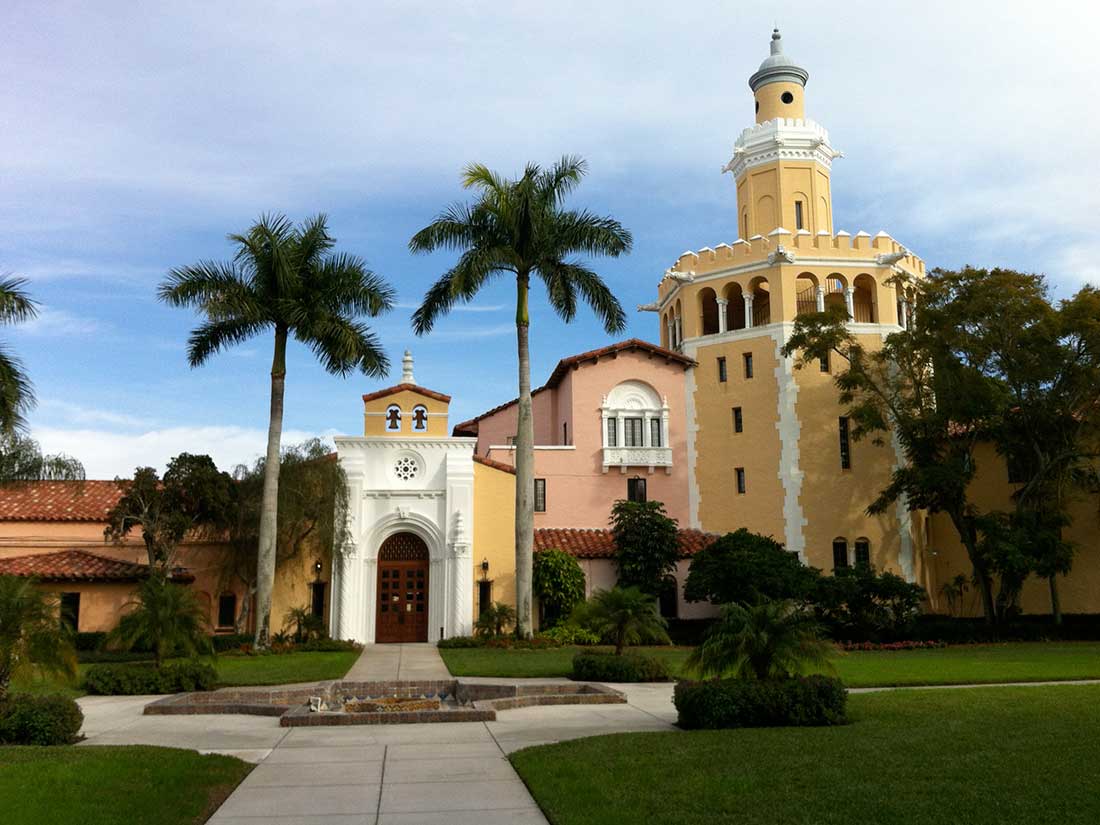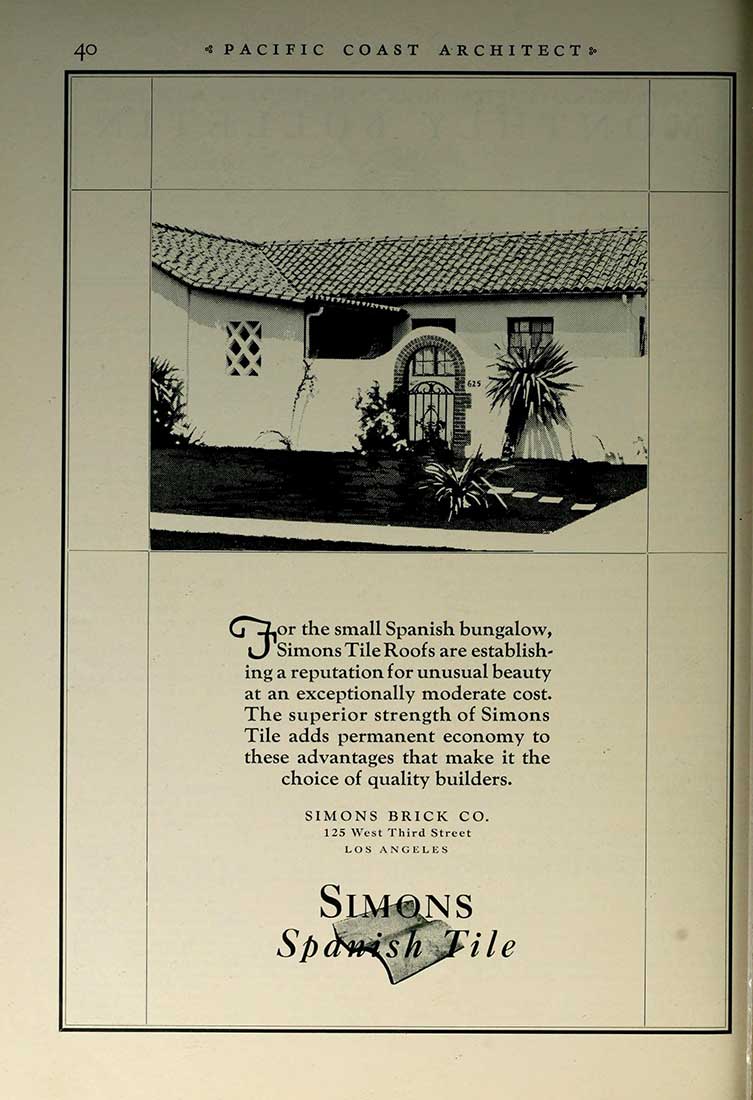The USA is one of the few places in the world where one can find all together buildings copying Istanbul's Saint Sofía, a Chinese pagoda or a Bangalore palace; British and Normand style of houses, Italian villas just like the ones in Tuscany or Andalusian patios. The wide range of styles is what makes the USA such a peculiar place. It is but reasonable that the hordes of European immigrants would eventually reproduce what they saw in their homeland countries.
There are many architectural styles that influenced construction in the USA. For instance that that was called Neocolonial architecture took Andalusian architecture as inspiration to populate the west coast with Mediterranean-Castilian villas and mansions that could very well be in Sevilla or Córdoba.
The first Andalusian architectural fashion introduced in the USA was what we nowadays call “Moorish Revival” or “Neo-Moorish” which aimed at an exotic Renaissance very popular in Europe and the USA and that was initiated by the Romantic tourists of the XIXth century. This fashion peaked during the mid XIXth century. Spain is no different, and it was then when the bullfighting arena of Las Ventas or the Falla Theatre were built, both inspired in the Mezquita. Meanwhile in New York gigantic Giraldas are built, the New York City Center, the Central Synagogue in Chinatown or the East Village cinema at 2nd avenue.
Academics firmly believe that what made this architecture style fashionable was Washington Irving’s Tales of the Alhambra (1832). This best-seller introduced for the first time Muslim Spain into the readers’ mind. The word “Alhambra” suddenly became a talisman and many new business adopted (hotels, buildings, theaters…) the name.
Another fashion relating to our beloved Spain would be the “Mediterranean Revival”. A design style that arrived to the USA at the end of the XIXth century with a lot nuances original from the Spanish and Italian Renaissance. Within this style there are two key architects.
George Washington Smith who worked mainly in the West coast, and there built, among many other things, his Montecito home, inspired by what he had seen during his trip to Spain in 1914. He is considered the father of the Spanish-Colonial Revival style.
Addison Mizner (1872-1933), who we shall see in more detail. He was the son of a diplomat and for that reason he spent his childhood in Central America. Addison was a peculiar being from the very beginning. As a child he had a monkey as pet, he named it Deuteronomio. Later in life, in Palm Beach, he would walk with Deuteronomio’s heir, monkey Johnnie Brown, on his shoulder.
Addison Mizner was an architect whose insights on the Mediterranean and the Spanish Renaissance styles left a big impact in the south of Florida, where promoters and architect are still using his techniques and aesthetic compositions. Even though he was a huge figure during the 20’s he is no longer the most popular fashion these days. Mizner changed architecture in Palm Beach, he was the main promoter behind Boca Ratón and the one who would baptized a vast number of building with Spanish names.
He was wuite a controversial figure for the doubtful anecdotes and stories that he would narrate in his autobiography, for he was also a writer, he was nonetheless profoundly respected and admired by all. There is nothing but loving words from those who worked with him.
He would also design construction materials (Arab tiles and casted iron ornamentations, artificial stone, furniture…) at his ceramic factory of “Las Manos” later incorporated to Mizner Industries.
In 1905, Mizner visited Spain for the first time. In 1924, Mizner made a business trip to Spain, there he went to antique shops and compulsively bought thousands of different objects: casted iron ornaments, tiles, stones, furniture, religious items… everything that caught his eye was bought and then used in his own projects.
The first idea Mizner put into practice for his first building in Florida, the Everglades Club, was an Arab tower, a minaret, a clear reference to the Alhambra which he visited during his trips. Also the Renaissance style he introduced in Florida was not of Ottoman nor Italian craft but Spanish.
In his own words:
“I have taken architecture in old Spain and made it my own so that it would please me and meet Florida’s legal requirements. I have studied Spanish architecture and used what little I came to know about Spanish America in my own designs.”
♦♦♦♦♦♦♦♦♦♦♦♦♦♦
Photographic gallery with some examples of buildings of Spanish inspiration.






















NOTE: the text includes links to further readings on the topic.
